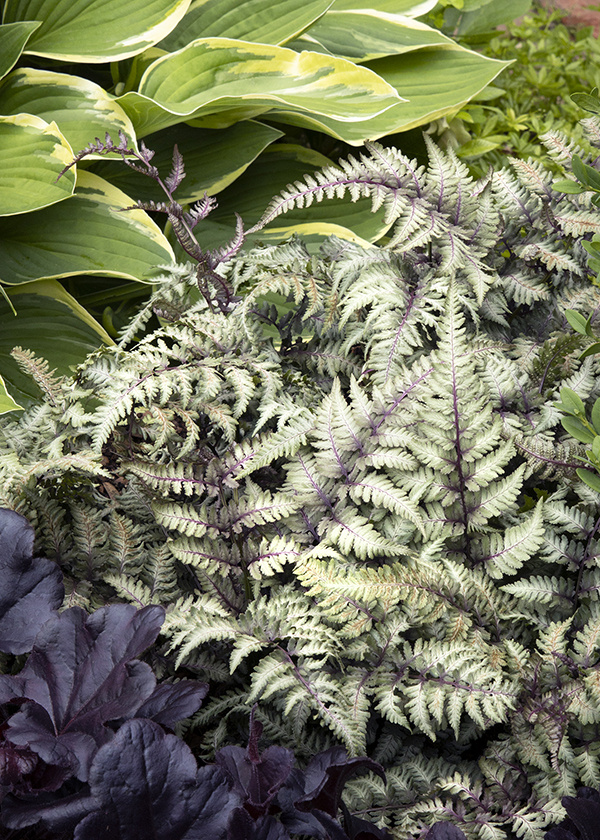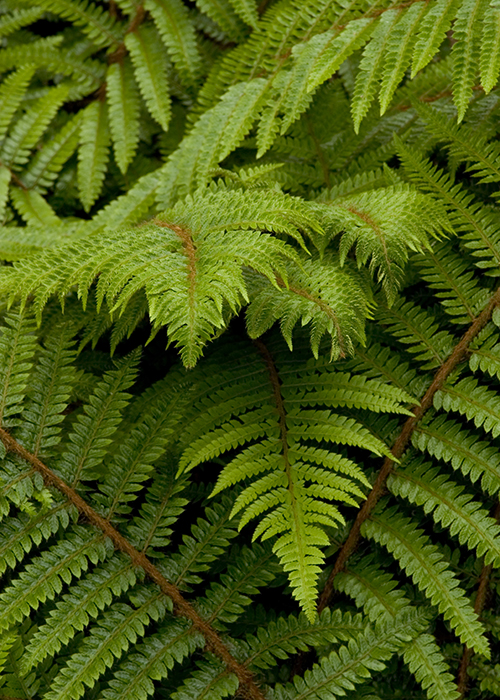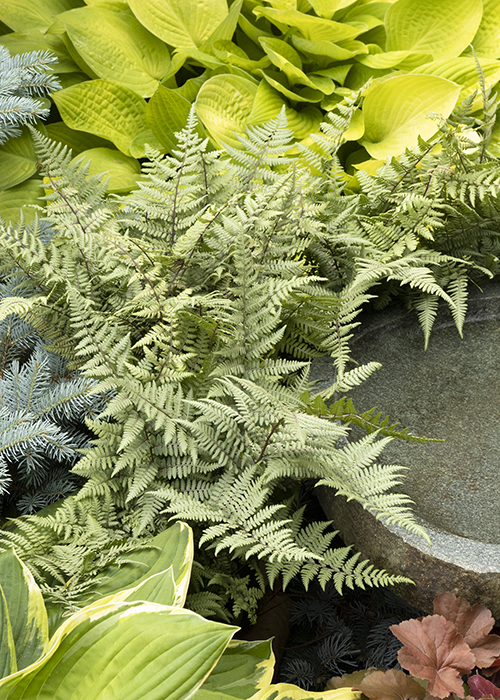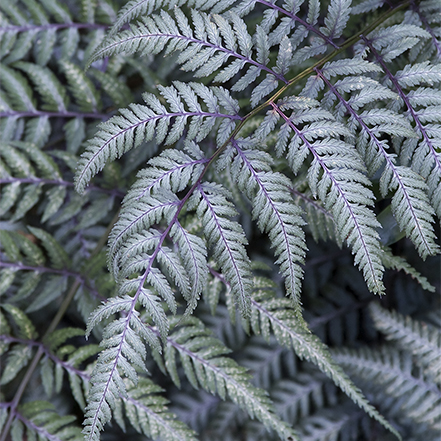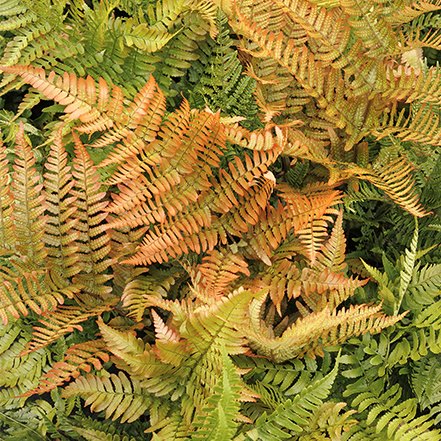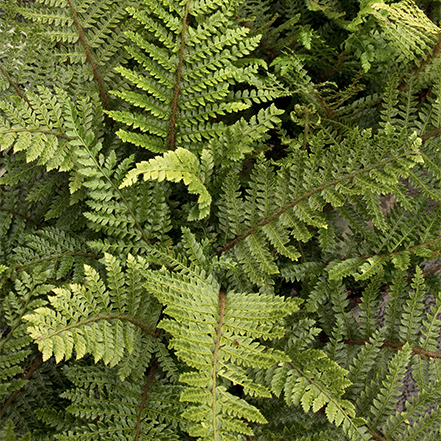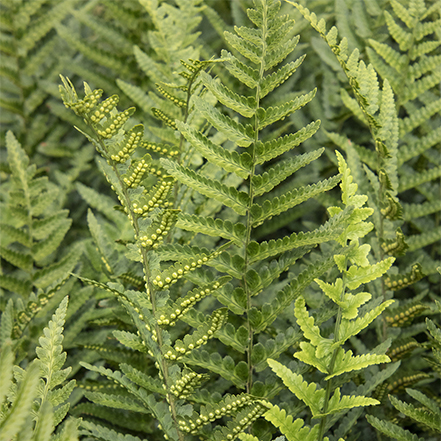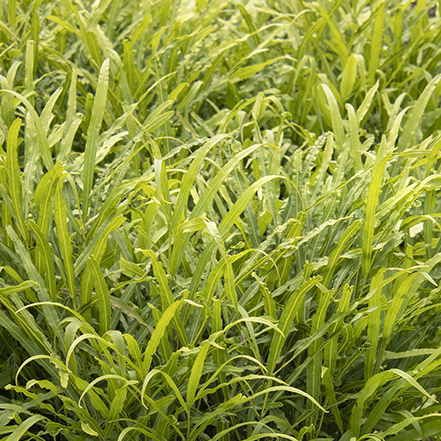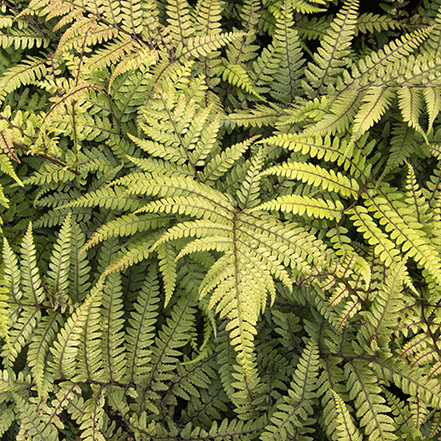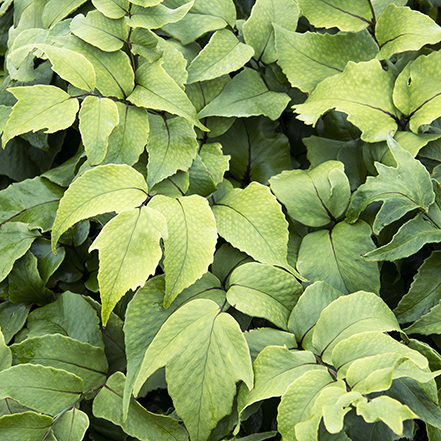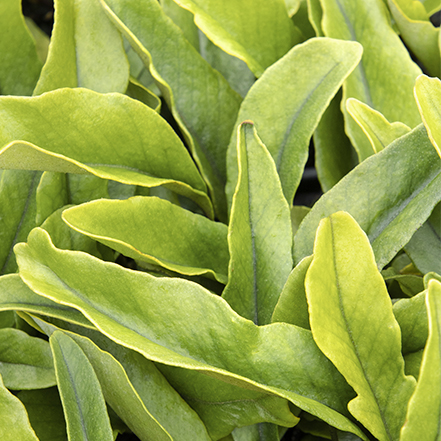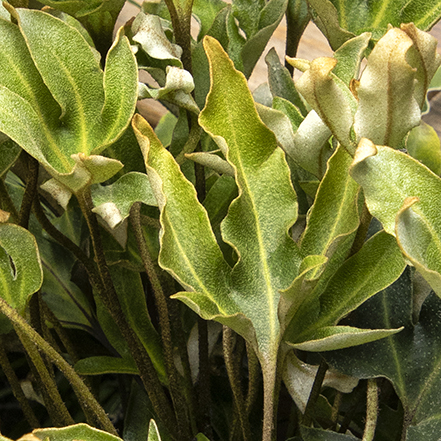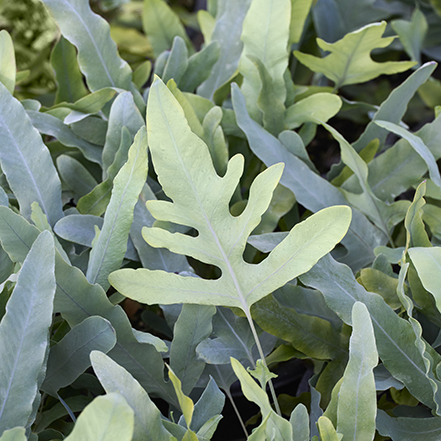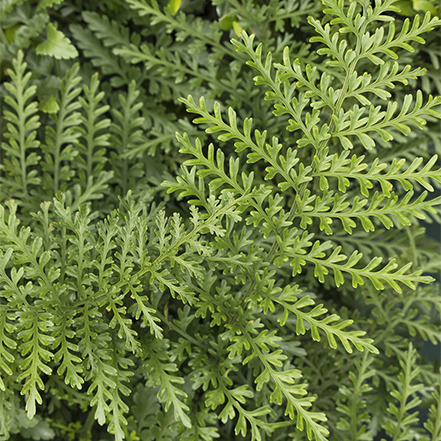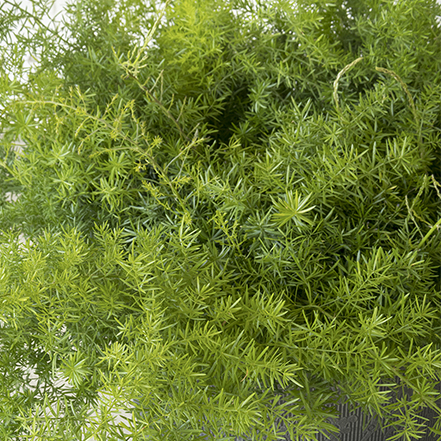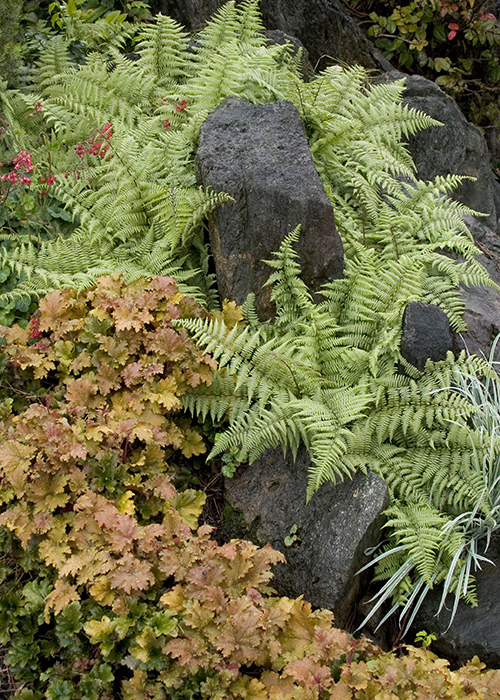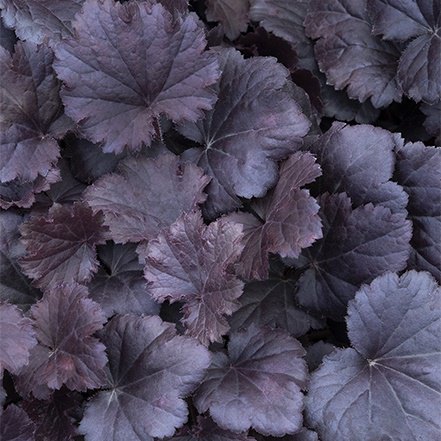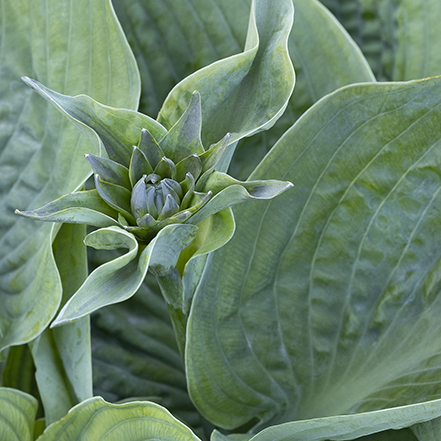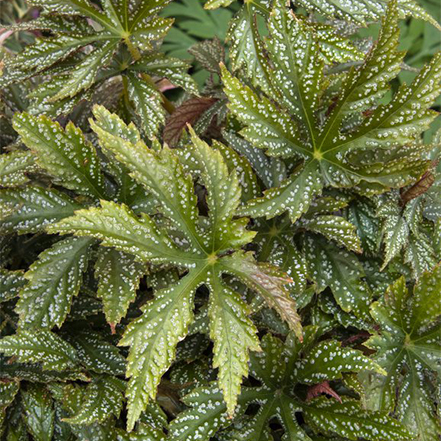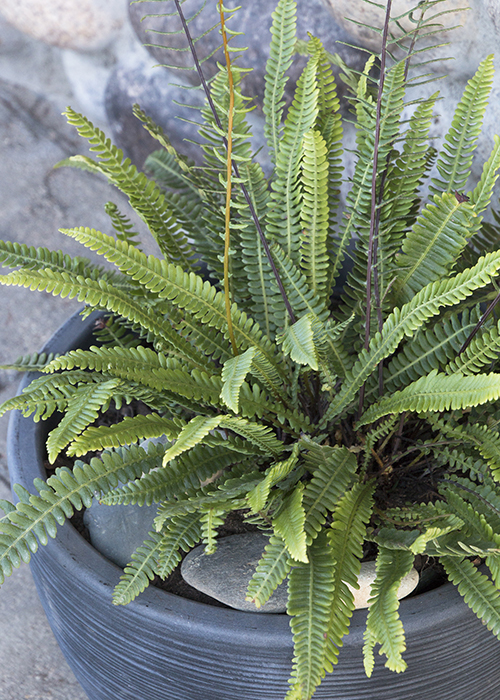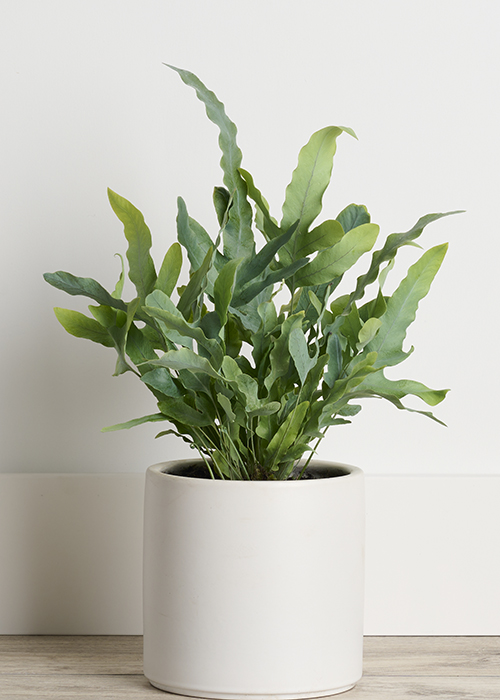There are few plants that bring a greater sense of enchantment and natural lushness than ferns. With their distinctive fronds and feathery foliage, ferns are valued for both their versatility and unique physical characteristics. In outdoor garden design, they help create tranquil, connected spaces with a timeless quality.
From shaded corners to lush woodlands gardens, ferns bring texture and depth that draw you farther out into your garden. But the allure of ferns doesn't have to end with your outdoor spaces. Ferns also make great houseplants — literally bringing the outside into the interior of your home.
Discover the best types of ferns to grow indoors and out, as well as everything you need to know to successfully grow and care for them right here.
Table of contents
- What is a fern?
- Types of ferns
- Best ferns for outdoor gardens
- Best ferns for growing indoors
- Ideas for using ferns in garden design
- Planting and caring for ferns
- Care for Ferns in Containers
- Overwintering Potted Ferns
1. What Is a Fern?
Soft Shield Fern naturalizes in cool woodland settings and adapts to dry shade.
Ferns are one of the oldest and most diverse groups of plants on Earth. They have been gracing our planet for millions of years — and not just for a few million years, but for 350-450 million years! Although most of the earliest ferns have since gone extinct, the fact that they have successfully evolved and been around for so long partly explains the diversity and sheer number of ferns that still exist today, far surpassing any other non-flowering vascular plant.
One of the defining features of ferns is that they don’t have flowers, nor do they have seeds. Instead, they reproduce through spores, which are tiny reproductive cells found on the undersides of their fronds. This unique characteristic probably adds to the mystique of ferns, as they rely on the wind or water to disperse their spores to propagate.
Before we dive into how to plant and care for ferns, here are a few Fun Fern Facts you might find interesting:
- Fern spores don’t just spread to the immediate neighboring spaces. They can travel hundreds of miles on air currents before finding the perfect spot to land and grow.
- The curled top of an emerging fern frond is called a crozier or fiddlehead.
- Some ferns grow to be only about ½ inch tall, while others can grow to more than 50’ tall. Variation in height is just one example of how diverse ferns are!
Types of Ferns
There are thousands of different types of ferns, so it can be tough to narrow down the best types for your garden where there are so many variables at play. So we're narrowing it down to seven of the best types of ferns for your outdoor space.
Best Fern Types for Growing in Outdoor Gardens
Ghost Fern (Athyrium 'Ghost') is a favorite type of fern for shady gardens thanks to its unique silver-green color.
Lady ferns (Athyrium spp.) are a garden favorite thanks to their finely textured fronds and unique array of colors. Japanese Painted Ferns (Athyrium niponicum) feature dramatically colored foliage in blue-greens and silvers, with red or purple central ribs. Zones 4-9.
Wood ferns (Dryopteris spp.) are adaptable ferns with upright fronds that look lush and stately in woodland gardens. Autumn ferns (Dryopteris erythrosora) are a type of wood fern that emerge a copper-red color (ironically in the spring), then mature to a deep green. Zones 4-9.
American Maidenhair Fern (Adiantum pedatum) is a cold-hardy North American native fern with lacy green fronds that pop against shiny black stems. They spread quickly in moist, shady areas with good circulation and are a favorite choice for woodland gardens. Zones 3–8.
Shield Ferns (Polystichum spp.) provide outstanding foliage for shady conditions. Their dark green, feathery fronds look tropical, but are actually quite hardy and provide the perfect contrast to bold-leaved plants. These semi-evergreen ferns naturalize well in cool woodland settings and adapt to dry shade conditions once established. Zones 5-9.
Ostrich Ferns (Matteuccia struthiopteris) are aptly named for their large, graceful fronds that resemble ostrich plumes, Ostrich ferns can grow to a height of 5’ tall. An excellent fern for woodlands gardens and damp areas, these big guys are more cold-hardy than other ferns. It spreads slowly by underground rhizomes. Zones 3-7.
Holly Ferns (Cyrtomium spp.) are popular for their hardiness and handsome foliage, making for an excellent groundcover or border edging in shaded locations. The stiff, glossy, dark green fronds of holly-like leaflets add excellent texture, even in containers. Remains evergreen in regions with mild winters. Zones 6-10.
Tongue Ferns (Pyrrosia spp.) are warm-climate ferns with distinctive strap-shaped leaves and leathery foliage. They thrive in containers and on slopes. The Jurassic™ Triceratops and Brontosaurus Pyrrosia ferns are truly unique specimens collected by plant explorer and plantsman, Dan Hinkley. Zones 7-11.
Classic Fern Favorites
Japanese
Painted Fern
In the shade garden, these stunning mounds of foliage are true showstoppers. Their luminescent blue-green fronds, adorned with dark central ribs that gracefully transition to silver at the edges, create an enchanting display. With a compact stature and spreading form, they excel as striking foreground foliage, effortlessly capturing attention. Partial to full shade. Up to 24" tall and wide. Zones 4-8.
Brilliance
Autumn Fern
This stunning coppery red selection outshines others with its bold appearance. Ideal for dappled sunlight to deep shade, it boasts deeply cut, dark green leaves as it matures. Easy to grow and adaptable to drier soils in cool, shaded spots, it spreads through underground stems. Partial to full shade. Up to 24" tall, 18" wide. Zones 4-9.
Tassel
Fern
A lustrous fern that is sure to lend an elegant look to shaded gardens. Particularly beautiful when new fronds emerge stiffly, then droop backwards to form a tassel. Beautiful in mass plantings as a groundcover, especially under flowering shrubs. Partial to full shade. Up to 2' tall and wide. Zones 6-8.
Exclusive Jurassic™ Ferns
Gathered throughout Asia by plantsman Dan Hinkley, this unique collection of ferns adds a variety of textures to woodland gardens. With six distinctly different species, there is a variety that will thrive in nearly any type of shady location.
Jurassic™ T-Rex
Wood Fern
Erect fronds ranging from dark to light green form a strikingly vertical clump for a bold and highly textural statement in a shaded garden. Especially handsome when grouped to frame a garden element or niche in architecture. Use to add height and dimension to a low border or brighten a woodland understory. Partial to full sun. Up to 36" tall and wide. Zones 5-8.
Jurassic™ Velociraptor
Ribbon Fern
From relatively high elevations of the Hubei Province of China comes a hardier selection than the typical species. Best grown in partial shade where it will form a burly, finely textured, compact clump, but also ideal for a container on a shaded terrace, or even in the home near a bright but not sunny window. Partial to full sun. Up to 18" tall and wide. Zones 7-9.
Jurassic™ Pterodactyl
Eared Lady Fern
Add airy, feathery texture to a shady spot with the arching fronds of this clump-forming fern. Pale green fronds unfurl from red stems, creating a two-toned look with the older, dark-green foliage. Excellent in a woodland garden combined with bold-leaved plants such as hostas and brightly colored heucheras. Partial to full sun. Up to 18" tall and wide. Zones 6-9.
Jurassic™ Stegosaurus
Holly Fern
Grown from spore collected by plantsman Dan Hinkley in Hubei Province at 6,000 feet, this hardy evergreen fern provides bold texture with holly-like fronds and large leaflets. Perfect for a woodland planting or a container on a shaded terrace. Partial to full shade. Up to 24" tall and wide. Zones 6-9.
Jurassic™ Brontosaurus
Tongue Fern
Growing on rocks under extreme drought conditions, this curiously beautiful evergreen species was collected in Hunan Province by plantsman Dan Hinkley. It is best cultivated on steep embankments in draining soils, on rotting stumps or logs, or as a container plant in partially shaded sites on a terrace. Partial shade to partial sun. Up to 1' tall and wide, spreading wider over time. Zones 8-11.
Jurassic™ Triceratops
Finger Fern
Collected in Taiwan in 2012, one of the most exceptional of the Pyrossias, forming substantial evergreen mounds of leathery palmate foliage. In nature, it is often found growing on moss-covered rocky surfaces and will shrivel during dry conditions while resurrecting after rains. In the garden, it will stay lush when provided with summer moisture. Ideal on a slope in partial shade, but can also be used as an easy-care container plant. Partial shade to full sun. Up to 2' tall, 3' wide. Zones 7-11.
Favorite Indoor Fern Types
Many ferns make beautiful indoor plants, as long as you provide them with the right amounts of light and moisture. Most ferns will require a humidifier in the room to give them the appropriate amount of moisture. Here are 6 Indoor Fern Fan Favorites to get you started. For more tips for growing ferns indoors, check out this post.
Austral Gem Bird’s Nest Fern (Asplenium hybrid 'Austral Gem') is visually unique with its thick, glossy, dark green fronds. It is also the ideal houseplant because it is highly adaptable to low humidity, and it doesn’t develop messy spores because it’s sterile. Zones 9–11.
Blue Star Fern (Phlebodium aureum) boasts icy blue-green leaves emerging gracefully from its hairy rhizomes. It thrives in well-lit spaces and is a perfect choice for indoor growing. Regular watering to keep the soil moist and a nearby humidifier is all it needs to flourish. Zones 9-11.
Compact Sprenger Asparagus Fern (Asparagus densiflorus 'Sprengeri Compacta') is a great starter fern. Compact, it forms a nice, tidy shape that looks great planted in a basket, then hung in a sunny, but not too hot, window. If needed, increase humidity by placing it on a pebble tray with water or add a humidifier. Zones 9-11.
Jurassic™ Velociraptor Ribbon Fern (Pteris cretica) is a lush fern that will fill its space with finely textured foliage. Jurassic™ Velociraptor is perfect for containers and thrives in a bright window out of direct sunlight. Keep the soil evenly moist and do not allow it to dry out. Zones 7-9.
Regal Red Japanese Painted Fern (Athyrium niponicum 'Regal Red') can be a bit of a challenge indoors. However, this variety’s striking colors make them worthy of the effort. Provide ample humidity, keep soil evenly moist, and, again, place in a sunny, but not too hot, window. Zones 4–9.
American Maidenhair Fern (Adiantum pedatum) is a rewarding fern to grow indoors. It can be a bit of a diva if not kept constantly moist, but not soggy. Mist often and mulch to help the soil retain moisture. Set a few feet from a southern or eastern-facing window, and turn weekly to ensure even light. Yes, all this work is worth it. Zones 3–8.
Indoor Fern Favorites
Austral Gem™
Bird's Nest Fern
Durable, handsome, and highly adaptable to low humidity, this sterile variety does not develop messy spores, making it an ideal houseplant in any climate.
Compact Sprenger
Asparagus Fern
A great option for overwintering as an indoor plant, with a compact size that creates a neat and attractive appearance, making it perfect for planting in a basket and hanging near a sunny window (without direct heat).
Ideas and Tips for Using Ferns in Garden Design
Ghost Fern (Athyrium 'Ghost') and Heuchera make for a beautiful, low-maintenance combo in a shady space.
Whether you have a large backyard or a small urban courtyard, you can up your gardening game by incorporating ferns into your garden design.
Consider the following design tips that work wonderfully with all types of ferns:
- Groundcover: Low-growing ferns, like the Silver Cloak Fern, make great groundcovers. They create a captivating carpet of green that can border paths & streams or connect one space to another within your garden.
- Sweeps: Mimic nature by adding large sweeps of ferns in your garden, like Brilliance Autumn Fern. These drifts of ferns can be a statement specimen or can serve as a great backdrop for other plants that you want to be highlighted.
- Look-At-Me Plants: Some ferns, like tree ferns (e.g., Australian Tree Fern) and Ostrich Ferns (e.g., European Ostrich Fern) can grow to impressive sizes. Use these statement plants as focal points to draw attention and add some pre-historic drama to your garden design.
- Fern-Only Garden: Designate an area of your garden to be a fernery, devoted exclusively to growing ferns. Showcase the striking beauty and extensive diversity of ferns by planting masses, or colonies, of different species and varieties of ferns of varying heights, colors, and textures.
- Mix and Match: On the other design extreme, highlight the compatibility of ferns by pairing them with companion plants that are typical of a woodland garden. For example: hosta, hellebores, astilbe, and heucheras.
- Containers: If you have limited space, but want some green in your life, ferns have you covered. Many varieties of ferns thrive in containers. Fill pots, hanging baskets, or other containers with ferns to green up the smallest of spaces.
- Integrated into Hardscaping or Rock Features: Plant ferns above, below, and within the nooks and crannies of boulder walls and groupings of boulders to create a greater sense of history and enchantment. Or make a really bold statement by creating a living wall with ferns as the only plant material used.
3 Favorite Fern Companions
Sirens' Song™ Dark
Night Heuchera
A favorite fern companion thanks to its deep purple-red, sun-tolerant foliage, which looks spectacular next to any kind of fern. Magnificent sprays of reddish-pink blooms will lure hummingbirds to the garden in late spring. Partial shade to partial sun. Up to 18" tall, 15" wide. Zones 4-9.
Eola Sapphire
Hosta
The large, seersucker-like, metallic blue-green leaves look fantastic next to the finer texture of fern fronds. Larger than others, this dramatic hosta is sure to attract attention. Slender spikes of purple-white flowers appear in summer. The thick, foliage is resistant to slug damage. Full to partial shade. Up to 3' tall, 4' wide. Zones 3-9.
Tectonic™ Shangri-La™
Begonia
Perfect for adding an exotic flair to a fern planting, with upright, fuzzy, dark-red stems support handsome, dark olive-green foliage with brick-red undersides. Deeply lobed, palmate, toothy leaves with silvery white speckles add bold texture and contrast to any lightly shaded setting. Partial to full sun. Up to 18" tall and wide. Zones 8-11.
How to Plant and Care for Ferns
To successfully create your outdoor oasis, you'll need to properly plant and care for your ferns. And as with any plant, the first step is to choose the right fern for the right space, in terms of growing environment, size, design aesthetic, and function. So read the labels and choose wisely using the tag and information about fern types provided above.
Location and Sun Exposure
Most ferns prefer shaded or partially shaded areas, as direct sunlight can scorch their delicate fronds. Look for spots under trees, near fences, or along the north-facing side of your house or other structure where your ferny friends can receive filtered or indirect light.
Avoid planting them in areas that receive intense afternoon sun, as this can cause leaf burn and stunt their growth. If you have limited shade options in your yard but still want to try your hand at growing ferns, select ferns that tend to tolerate more sun – varieties like Asparagus Fern (e.g., Compact Sprenger Asparagus Fern).
Soil Preparation and Drainage
Ferns thrive in well-draining soil with rich organic matter. That may describe your garden; but if not, you can improve the soil structure, drainage, and fertility by working compost, leaf mold, or well-rotted manure into the native soil. This is especially critical for heavy clay soils, as they tend to retain excessive moisture, which can lead to root rot, and lack the nutrients ferns need to thrive.
Planting Guidelines
When planting ferns, follow these basic guidelines to improve your chances of success:
- Dig a hole that is slightly larger than the root ball of the fern.
- Remove the fern from its container and place it in the hole, making sure the crown (where the roots meet the foliage) is level with the soil surface.
- Backfill the hole with soil, pressing gently around the roots to remove any air pockets.
- Water thoroughly to settle the soil.
Watering Tips
While ferns prefer moist soil, they don't like to be waterlogged — so it can be a balancing act. Here are some fern-specific watering tips:
- Water deeply and thoroughly, allowing the soil to become evenly moist but not soggy.
- Avoid overwatering. As referenced above, too much water can lead to root rot and other moisture-related problems.
- Allow the top few inches of soil to dry out slightly between waterings.
- Monitor the moisture level of the soil regularly, especially during hot and dry periods. Fortunately, most ferns will “tell you” if they’re thirsty; so, listen.
- Mulch around the base of your ferns to help retain moisture, increase humidity levels, and suppress weed growth.
Maintenance and Care
Most ferns are generally considered low-maintenance plants, but they still require some care to keep them healthy and vibrant.
- Regularly inspect your ferns for any signs of pests or diseases, such as aphids or fungal infections. Promptly address any issues to prevent further damage to the affected plant and to avoid spreading to others.
- Prune any damaged or yellowed fronds as you notice them to keep an attractive appearance and encourage new growth. Deciduous ferns can be trimmed as the fronds yellow in late fall and early winter. The older fronds of semi-evergreen and evergreen are best trimmed off in late winter or early spring before the new growth emerges.
- Fertilizing ferns is typically unnecessary; however, if your ferns show signs of nutrient deficiency, such as pale fronds or stunted growth, you can apply a balanced (10-10-10), slow-release fertilizer according to the instructions on the label.
Care for Ferns in Containers
Deer Fern (Blechnum spicant) is perfect for shaded containers and gardens.
Many of the tips for growing ferns in containers are similar to those for growing ferns in your landscape beds; but because everything is concentrated in containers, it’s more important that you follow them.
- Use a quality, well-draining, potting soil.
- Provide your ferns enough room to grow in the container (e.g., 2 inches around the edge).
- Avoid using containers made of clay or another material that tends to heat up, and therefore dry out, more quickly. Resin containers are good options to consider for this reason.
- Regardless of the material your containers are made of, the soil in them will dry out more quickly than the soil in your garden. Therefore, monitor their watering needs more closely. Depending on a number of factors, you may even need to water your potted ferns daily.
- Because you’ll be watering your container-bound ferns more frequently, you’ll also be washing away the available nutrients faster. Therefore, fertilizing ferns in containers is important.
- Feed your potted ferns monthly during the peak growing season with a balanced, water-soluble fertilizer.
- For those ferns that don’t go dormant, the rest of the year you can pull things back and fertilize only once every 2-3 months.
- For those ferns that go dormant, do not fertilize them after the growing season and until early spring.
Overwintering Potted Ferns
Blue Star Fern (Phlebodium aureum) is a great indoor plant that loves humid conditions.
If you live in an area of the country with harsher winters, consider bringing your potted ferns inside. Fortunately, it’s pretty easy to do.
- Better early than late: Bring your potted ferns in before the first frost. If you wait much longer, you’ll be pressing your luck.
- Trim and Shake: Cut back any errant fronds to shape things up and then give your ferns a good shake to knock off anything that’s already dead or on the way out before you bring the potential mess inside.
- Hose’r Down: Thoroughly hose down both the plant and the container – doing so will ensure that you don’t inadvertently bring dirt or any unwanted guests into your home. Make sure to check under the backsides of the leaves in case a critter is hiding out back there. If you do find pests, address the issue before bringing the fern inside. (Find more on this here).
- The Perfect Place: Find a cool spot inside with indirect lighting for your ferns’ winter home. Like outside, you don’t want to subject your ferns to harsh light. You also may want to find a place that is a bit out of the way and easy to sweep up, as some ferns can make a mess (e.g., basement, garage, rarely used bathroom). If they start dropping their leaves, increase the humidity level around them by placing them on a plate or tray with water and gravel.
- Minimal Food and Water: Since overwintering ferns are not actively growing during their time inside, water them minimally once they dry out. And don’t encourage new growth by fertilizing them at all.
- Don't Rush Them Outside: Although you may be tempted to bring your potted ferns back outside at the first signs of warmer weather, fight the urge and wait until you’re fairly certain there is no threat of a late frost.
About the Author and Designer
Doug Scott is the owner and lead designer at Redeem Your Ground, an exterior design firm, based in Atlanta, GA. Through his designs, Doug hopes to create outdoor spaces that reflect each client's wants to live outside at home. Doug and his wife, Brittany, also have a family, home & garden blog by the same name. They share stories, helpful information, and instructional how-to’s—hoping to enable and inspire others to live more fully at home.






